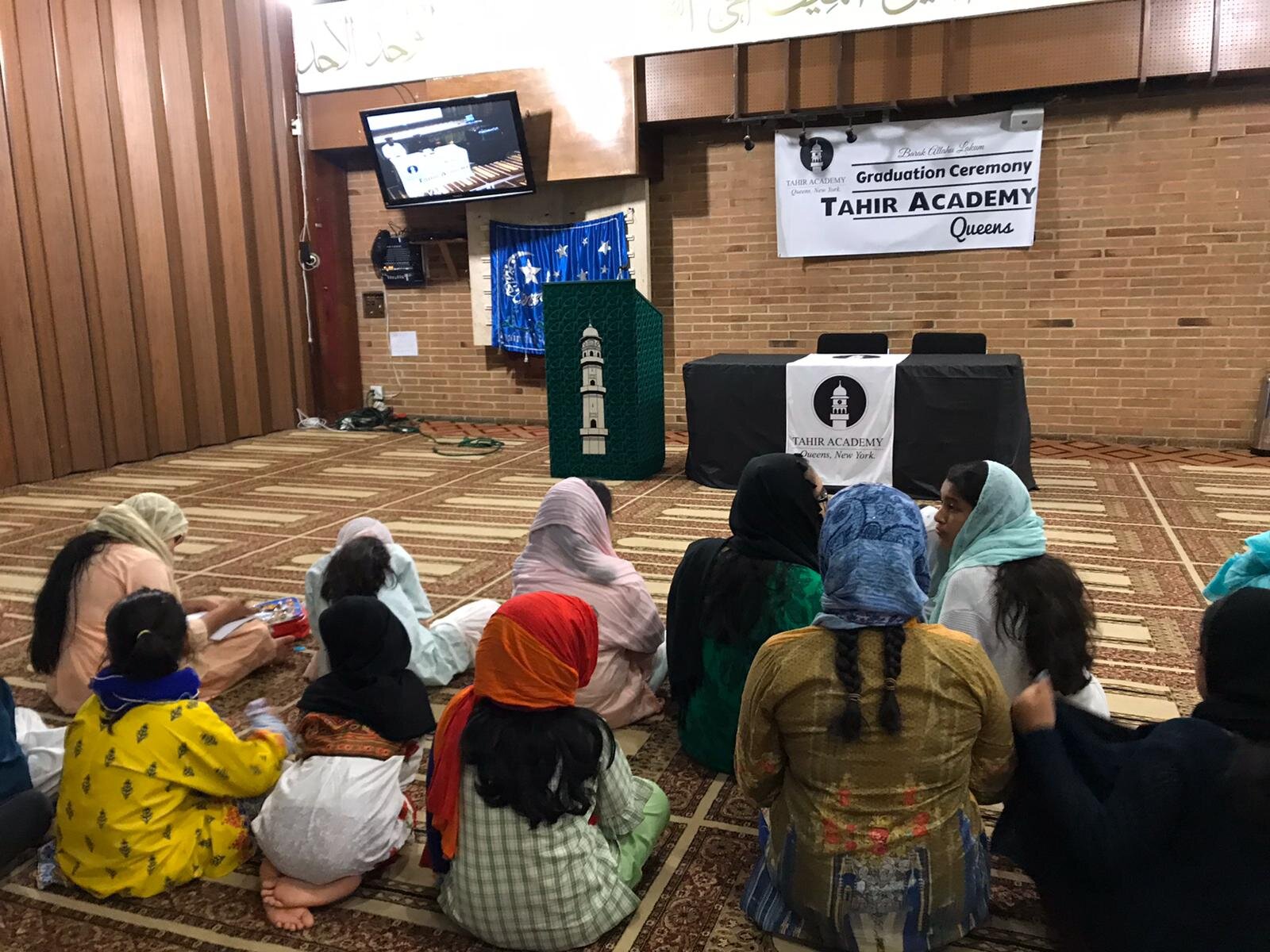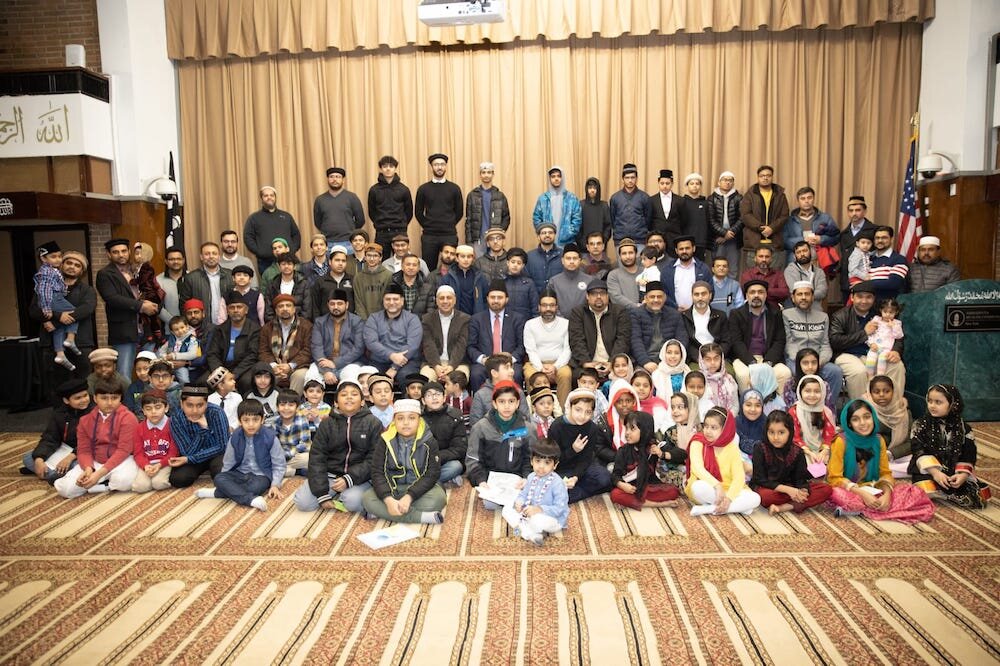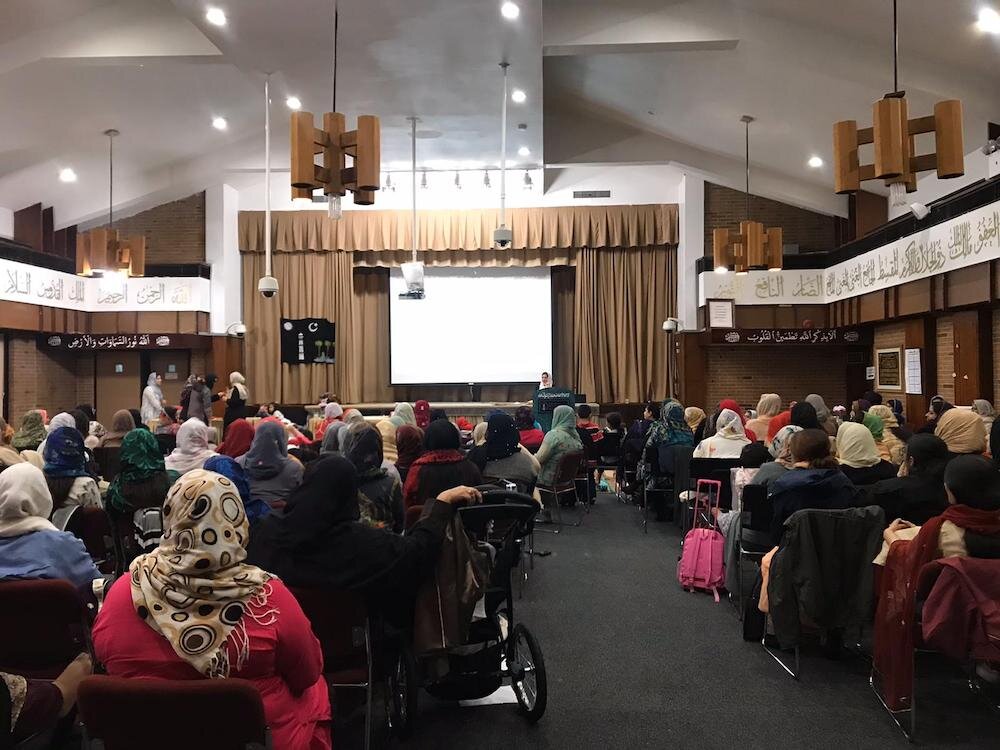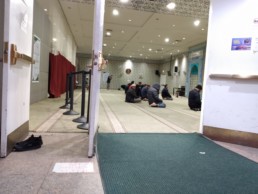No Atheists in the Foxhole
No Atheists in the Foxhole
Neha Mehrotra | nm3148@columbia.edu

It’s Thursday, April 8, the beginning of the Jewish holiday of Passover, and Hillel, the Center for Jewish student life at Columbia and Barnard, is hosting its annual Seder – traditionally a time to gather around a table with family and friends. The center’s rabbinic intern, Andrew Oberstein, is officiating at the celebration. But today, when Oberstein kicks off the evening asking, “What makes this night different from all other nights?” he is referring to something over and above Passover’s traditional history. Though the formal characteristics of the occasion are the same—they will still have four questions, there will still be four children, they will still sing dayenu and they will still retell the story of Israelites exodus from Egypt—Passover is exceptionally unique this year.
Rather than sitting with others at a holiday table, Oberstein sits all alone in his living room in the Upper West Side, staring at his computer screen. People on his right and left are in their own homes instead of at his side. With grocery stores transformed into the new danger zones, tonight’s Seder plate consists of leftovers from his kitchen, though in one form or another, all the essential symbolic elements are there: the shank bone, vegetables, bitter herbs, eggs and a fruit and nut dish known as haroset.
This is Oberstein’s first—and God willing his last—Zoom Seder.
For years, surveys have indicated that Millennials (born 1981-1996) and Generation Z’ers (born 1997 onwards) are far less likely than older generations to identify with a religious group. Overall, 35% of adult Millennials, i.e., one in three, identify themselves as “religiously unaffiliated.” This is hardly a surprise, given the irreverent world we now live in. Rather than look up, we now prefer to look askance. We no longer need God to answer questions beyond our reach. The internet suffices. When Nietzche said that God is dead, he was prescient. Agency is no longer surrendered to a higher power; instead, humans control their own lives. We are our own gods.
But to those who proclaim religion’s obsolescence, the Coronavirus pandemic sweeping the world has foregrounded a different reality: Far from being obsolete, religion has adapted to the need of the times, and in the process, has succeeded in proving its own dynamism and continued relevance. Amongst the younger generation too, religion—if once seen as static dogma—is now appreciated for its reflexive, reflective timelessness.
April is a time of renewal in religions all around the world: Jews celebrate Passover; Christians come together for Easter; Muslims fast for Ramadan; Hindus light firecrackers for Ram Navmi; and Sikhs offer societal service for Baisakhi. This year, as students across the country vacated college campuses and returned home, on-campus festivities were understandably abrogated. But as Columbia Religious Life communities attempted to salvage what little celebratory spirit they could, they realized that COVID-19 might have derailed some aspects of their yearly rituals, but it had accentuated other, more underlying, connotations of the festivals themselves.
“In many ways, an out of the ordinary Passover is part of the fabric of Jewish history,” said Oberstein at the start of the virtual Seder. Oberstein, a rabbinical student at Hebrew Union College-Jewish Institute of Religion, only recently joined the Columbia/Barnard team as an intern. The online group he is officiating at today comprises 20 people, most of them students and alumni of the university, tuning in from the isolation of their homes.
“Jews kept Passover in underground caves during the Crusades, they kept it during the Holocaust, in ghettos, in concentration camps. And today, it’s a new reality. Today, we gather alone in front of our Ipads and laptops. But the spirit of the holiday is stronger than COVID-19 and maybe now, more than ever before in our lives, we need this story of the possibility of redemption, the story of hope.”
The very next day, Columbia Muslim Life hosts its weekly Friday Jummah Zoom. The student religious life adviser for Muslims, Amina Darwish, introduces the speaker for the afternoon: Imam Suzanne Kasim from Berkeley, California, who will be heading the prayer today. It’s the week leading up to Ramadan, and Kasim’s sermon emphasizes the holiday’s significance in these crisis-ridden times.
Darwish, who earned her traditional Islamic studies certifications from the Qalam Seminary in Dallas, and the Critical Loyalty Seminary in Toronto, Canada, knows Kasim from before, and the two keep up a warm, friendly banter throughout the sermon. Their conversation is punctuated by frequent laughter. “I love laughing with you friend,” exclaims Darwish at one point. “We always laugh so much, we do,” sighs Kasim.
Kasim goes on to frame her sermon around the twin axes of qadr (Allah’s divine decree to his followers) and dua’ah (followers supplication to Allah): “On the night of Ramadan, any dua’ah you make is answered,” says Kasim. Ideally, if you’re dua’ah is strong, it can push adversity away. If you’re dua’ah is weak, meaning you’re distracted, or you don’t have a strong relationship with Allah, you are liable to be afflicted with calamity. Ramadan, however, is a special circumstance. “If an illness or calamity happens, and a person makes a dua’ah on Ramadan, that dua’ah has the power to change Allah’s qadr. Allah accepts that person’s supplication and changes His decree.” And so Kasim encourages Muslim students to spend Ramadan supplicating to Allah to deliver humanity from this pandemic.
Personally, Kasim believes Allah has a purpose for the pandemic. “I think we have been abusing ourselves and the people and the earth around us. And Allah has paused everybody to think about what we’re doing. This is a pause.” Though Amina Darwish, the Islamic life advisor, agrees, she knows that for some students, this is going to be a really difficult test. “I know a student who lost her job because of this crisis and is now struggling to pay rent,” she says. Students come to Darwish with all kinds of concerns, now more than usual. Someone wants to know how they can serve those less fortunate than themselves; another student is worried about her grandmother, who is in a nursing home in Harlem; a third wonders how to sustain a sense of community in times like these. “I don’t think people’s religiosity has increased but they are more self-reflective now. Because they have so much time, they have turned inwards,” says Darwish.
Two days after Friday Jummah, it’s, once again, a time for celebration. Easter Sunday is here, and 39-year-old Ryan Kuratko, the chaplain of Columbia’s Episcopal Campus Ministry, has a packed evening: a 5 p.m. Bible study followed by a 6 p.m. Easter service. Only two students show up online for the Bible study, but one of them, undergraduate student Andi Dixon, encourages me to come for the 6 p.m. service because, as she puts it, “everyone and their mothers will be there.” And true enough: 17 students tune in an hour later, some accompanied by mothers, fathers, grandmothers, others settled in bed, alone but happy enough to chatter away. In fact, Kuratko’s own father has tuned in from North Carolina, and sits through the entire service, beaming proudly.
“In a way, online services are more intimate, more personal, because you can see people in their own homes, with their own family, like peeking into their window,” says Kuratko. Before this, Kuratko had never seen student Christine Piazza’s bedroom; he didn’t know Madeleine George gorged on chocolate when home alone; and he had definitely never met so many students’ parents all at once. “It’s a new kind of community,” he says.
It is indeed a new kind of community, even if it’s a smaller one: Across the board, Columbia’s religious life advisors agreed that the number of students attending weekly meetings has fallen, approximately by half. However, they didn’t think this was an indication of anything other than students having left campus to go back home. “This is just a disruptive moment,” says 40-year-old Rev. Dr. Ian Rottenberg, Dean of Religious Life. “My guess would be every event that had 20 people prior to students dispersing has seen drop offs. If I had been a college student, I wouldn’t have gone to my clubs at a time like this. I would just be trying to finish the semester. And a lot of students I’ve spoken to, their usual clubs have not reconvened since the breakup. So I don’t think it’s a religion specific thing. In fact, a 50% attrition rate is pretty good I would say.”
Though weekly attendance has fallen, the number of appointment requests for religious counseling received by Rottenger’s office have remained more or less constant. For his part, Rottenberg has noticed increased anxiety amongst students. “This is because students are losing family members. And the worst part is, they can’t even be there with their loved ones at a time like this. People are passing away, and students can’t even have a funeral service for them, can’t pay tribute to them as they deserve.”
Times like these have, as many of the people I spoke to pointed out, propelled an acute religious awareness.
“Even my nonreligious friends are grappling with this,” says Simran Jeet Singh, the 35-year-old Sikh pastor at Columbia. “People are realizing what the absence of community means, and are trying to connect - with themselves, with other people. And now they finally have the time to do it.” Darwish, the Islamic life advisor, admits that she has been praying a lot more, for people in all corners of the world whom she doesn't even know.
Virtual Buddhist meditation circles are witnessing an increase in new members frequenting weekly sit-ins to calm their anxieties. “Buddhist teachings allow students to take this crisis well,” says Rev. Doyeon Park, Buddhist religious life advisor at Columbia who received full ordination in 2007 and has since been working in New York City. “Because Buddhism teaches them about impermanence and how to cope with these changed conditions.”
Forty-one-year-old Father Dan O’Reilly, Director of Columbia Catholic Ministry, puts it most succinctly: “There are no atheists in the foxhole.”
Pledging Your Life to Allah, the Ahmadi Way
As published in Religion Unplugged
Pledging Your Life to Allah, the Ahmadi Way
Neha Mehrotra | nm3148@columbia.edu

NEW YORK— Suman Amara Ahmad has always known that her future was not hers to chart. But she doesn’t mind. She has made her peace with it. That, she says, is the fate of being a waqf-e-nau. You have no idea where you will land up. “I could be sent anywhere in the world,” she says. “It’s all up to the Khalifa.”
On a recent Saturday morning before the coronavirus lockdown, Amara was one among approximately 50 waqf-e-nau children who gathered at Bait-uz-Zafar, an Ahmadi mosque in Queens, New York. In Arabic, “waqf” means to pledge and “nau” means new.

The waqf-e-nau journey begins in the womb, when pregnant mothers offer their unborn child to Allah. This is not a metaphorical pledge but an actual one. When parents decide on rearing their child as a waqf-e-nau, they write a letter to their Khalifa (supreme leader) surrendering their child to the supreme leader, to assign them a societal role as he sees fit. This waqf-e-nau ijtema (gathering) was a biannual test of all the children pledged by this ritual, to measure their progress and reward excellence.
At 22 years old, Amara is too old to take part in the test, which is meant for children ages 8 to 15. But having gone through the same process when she was younger, she is familiar with its ins and outs and is here to help. The children themselves look excessively washed and combed and a little nervous. They have reason to be. At today’s ijtema, they will be tested on six standards: 1) Religious knowledge and etiquette 2) Hadith, sayings of the Prophet Muhammad 3) Quran 4) Salaat, the liturgy of prayer to follow five times a day 5) Nazm, a genre of Urdu poetry and 6) Prayer that is voluntary and not part of salaat. The pledges are marked for their performance in each category and, after a grand totaling, the highest scorers will be awarded prizes.

This practice is unique to a particular sect of Islam called the Ahmadiyyas. Though Sunnis and Shias are the two major sects of Islam, the religion has a number of offshoots, each with its own variations in belief and practice. Historically, Ahmadis have stood apart from mainstream Islam. While traditional Muslims believe that there is one God and Prophet Muhammad is the last prophet of God, Ahmadis believe Mirza Ghulam Ahmad (1835-1908), who founded the Ahmadi movement, was sent to renew the Prophet Muhammad’s message. Ahmadis do not propose a “return of the prophet” but rather consider Ghulam Ahmad to be the Messiah invoked in the Quran who is destined to come and renew the prophet’s message. The Ahmadiyya Muslim community teaches that God sent Ghulam Ahmad as a metaphorical second coming of Jesus Christ to end religious wars, condemn violence and restore morality, justice and peace.

Due to this difference of perspective, a large section of Muslims consider Ahmadis heretics and refuse to acknowledge them as Muslim. In response, the Ahmadis have largely cut themselves off from mainstream Islam. Though Ahmadis engage in missionary work in the communities they are a part of, their main focus is on consolidating strong cross-continental networks within their own community. The waqf-e-nau is an extension of this.
“We think waqf-e-nau children are special because they are going above and beyond to fulfill the responsibilities of an Ahmadi Muslim,” says Farah Ahmad, a mother who has pledged all three of her children to be waqf-e-nau, all of whom are participating in the day’s test: two sons, ages 13 and 8, and a daughter age 9.
Since the initial pledge is made before the actual birth, the child has no say in the matter, at least until the age of 15. From birth till their 15th birthday, waqf-e-nau children, like Amara, are given a special education. Every weekend, when most children are kicking back after a week of school, the waqf-e-nau attend Saturday training at the masjid, learning the finer points of their religion. Once they turn 15, the children are asked to renew the pledge made by their parents.
At this point, they could potentially demur and decide against continuing to be a waqf-e-nau. “But that’s rare. Once parents have committed, most children see it all the way through,” says Ahmad. None of her three children have reached the age of 15 yet, but Ahmad is confident that all her children will renew their pledge when the time comes. The first renewal is followed by a second renewal at 18, and a third one at 21. In this ultimate pledge, the Khalifa meets with the child, and based on the child’s chosen profession, assigns him to that part of the world where he will be most useful to society. The child in turn has to obey and go where the Khalifa instructs him.
The murabbi of the Bait-uz-Zafar mosque, Mahmood Kauser, whose job involves providing religious training and proselytization, explained the reason for this seemingly strange practice:
“Giving up one’s life to God is freedom. Let me elaborate. If I wave a ball at a dog, he will go fetch it. His eyes are glued to the ball. Is this dog free? No. Similarly, if one is bound by the wants and desires of this world, one is hardly free. Waqf-e-nau are pledged and brought up with one goal: to be free of all worldly desires. Their sole purpose is to be beneficial to mankind.”
One mother claimed that she was asked to pledge her child in a dream. “When I was in college, I dreamt that I was in the OR and my mom and sister were standing around me,” she said. “As I was lying there, my baby was brought to me wrapped in red cloth. On the cloth, it said in clear letters ‘waqf-e-nau.’”
Another mother said that everything she has belongs to Allah and her own child is no exception. “A child is a gift from Allah and so absolutely belongs to Allah first.”

Amara’s mother followed a similar reasoning when she first pledged Amara as a waf-e-nau. It’s been 22 years since then. Amara is currently in her second year of studying medicine, with no inkling of what her future will look like.
“As of now, medical students are being sent to Guatemala because they are most needed there,” she says. “But when I met the Khalifa last year, he told me that he won’t send me there. He is going to send me somewhere else. Let’s see.”
She glances around the room at the 8-12-year-olds demonstrating their knowledge of everything from the rules of Islamic dining to poems espousing the spirituality of Islam. Her eyes are warm and aglow. Perhaps she sees herself in these children, all of them bound to Allah, their futures lingering in the air, suspended, uncertain.
Of Prophets and Messengers
Of Prophets and Messengers
Neha Mehrotra | nm3148@columbia.edu

At times, the class at the Islamic Cultural Center of New York felt like elementary school. The imam would start off in a sing-song manner only to pause right before the end; at this point, he would linger expectantly, waiting for the congregants to finish his sentence.
“The relation between Abraham and Ismail is….” he would begin.
“Son,” the congregants would resound.
“From Ismail came the Muslims and from Jesus …?”
“Christians.”
The entire exchange is a tennis match, the ball being thrown to and fro, with participation from both sides. And though this equality ensures inclusivity, it also strikes one as infantilizing, transforming the imam into a paternal figure and the participants into children. Perhaps that is part of the appeal.
It is Saturday evening at the cultural center, located on Manhattan’s East Side, at 96th Street and Third Avenue. Between the Maghrib and Isha prayers, Imam Saad Jalloh leads the weekly teaching, known as Dars. Saturday’s Dars focuses on Fiqh, i.e., Islamic jurisprudence. Fiqh classes explore sharia, or divine law, as revealed in the Quran and Sunnah (teachings of Prophet Muhammad). Today, the emphasis is on Allah’s prophets and messengers: the difference between them, their rank and hierarchy relative to each other, the source of their knowledge, and finally, the teaching that they imparted.
A religious and cultural institution “serving the neighbouring Muslim community of Manhattan in particular and entire Muslim community of America in general,” the Islamic Cultural Center was established in the 1960s by Muslim ambassadors from Saudi Arabia, Libya and Malaysia among others. Jalloh, himself, comes from Sierra Leone. In today’s sermon, he starts off simple, highlighting the basic characteristics that comprise prophets and messengers. “Allah placed 120,000 prophets and messengers here on Earth. He made sure that they had the best message, best family lineage, made them very good looking, with the best characteristics and best behavior. They were the best among all human beings.”
During the sermon, the imam speaks in Arabic and then repeats his words in broken English. This seems catered to accommodate the diversity of Muslims who frequent the mosque: from lifetime New Yorkers, to migrants from the Middle East, to South Asian Muslims, all of whom pray side by side in this giant prayer hall. Not everyone, however, is afforded unbridled access to the entire space. In keeping with the rules in mosques all around the world, men and women sit, and pray, separately. During this sermon too, the imam and approximately 50 male congregants sit in the main prayer hall out front. Two women and I sit at the back, separated from the main hall by a thick curtain. We cannot see the imam, and we definitely cannot respond to the periodic questions he throws out to his audience.
The imam goes on to make a somewhat confusing comparison between messengers and prophets. “Messengers will come and spread God’s message. Prophets will revive this message. So every messenger is a prophet but every prophet is not a messenger,” he says. He doesn’t stop there. He explains that even within the ranks of the messengers and prophets, there are degrees of superiority. “Some are higher ranking than others. We prefer some messengers over others. We consider some better than others.”
However, as if catching himself in time, the imam continues: “But that doesn’t mean they are unequal. Regardless of rank, all prophets and messengers are commissioned by the same God with the same message. They worship the one God, Allah. All is One. The prophets may have different levels of expertise, different geographical spheres of influence, different miracles. But these are just different approaches that all converge into the same goal. All is One.”
Jalloh seems caught in a precarious balance: between the qualitative differences in the messengers of God, and the underlying unity of their message. He is effectively walking the tightrope between inequity and equality, trying to highlight one without letting go of the other.
He ends the sermon with something like a warning: “Prophethood is a blessing that Allah grants to whoever he wishes. It’s not something you can work hard at until you get it. No one can achieve prophethood by working hard. No one can reach prophethood by garnering knowledge. It’s all up to Allah. Prophethood is a direct appointment from Allah. He decides and he has the final say.”
Jalloh’s last words are decisive; not like his lingering half-sentences of earlier, where he waited for congregants to finish his thought. In this case, Imam Jalloh, like Allah, has the final say.



